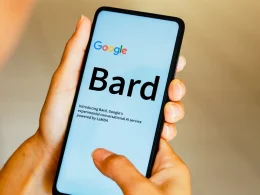Today we will discuss various ways to Grow Innovation in Schools. Some of them are encouraging students to ask questions, encourage them to explore different disciplines and solve real-world problems, use technology to enhance education and promote collaboration with other educators, encourage them to work on projects that are relevant to their lives, create a STEM classroom, use technology to promote student-centered learning and encourage them to be creative. (Also Read: Artificial Intelligence and its Opportunities)
5 Ways to Grow Innovation in Schools
Why is it important to encourage students to ask questions?
Teachers can use questioning to help students analyze texts, mathematical processes, and social issues. Every lesson should include questions for students to ask. Teachers can also encourage questions outside of the classroom through social media sites and personal interviews with experts. The more questions students ask, the more likely they will be to share their insights and opinions.
The Question Formulation Technique was originally developed as a way to engage parents in schools. Its creators, Dan Rothstein and Luz Santana, were working to get low-income parents to become more involved with their children’s education. They asked parents why they didn’t participate in events at their school, and many said they were intimidated by the idea of asking questions.
Teachers often assume that students don’t ask questions, but this is not necessarily true. Many kids are simply conditioned to not ask questions. Others simply have a fear of being wrong, so they wait for their teachers to ask them questions. But good question-asking is an essential part of lifelong learning and independent thinking.
In order to foster innovation in schools, teachers should allow students to ask questions and not rush them to provide answers. Allowing students to ask questions helps them think independently and creatively. It also helps them feel brave enough to look for answers for themselves.
How can technology be used in STEM education?
Teachers can engage students in STEM through interdisciplinary project-based learning. They can choose themes that integrate STEM and humanities topics. They can also utilize a variety of educational resources to create a unique curriculum. Teachers should focus on building students’ skills and attitudes, such as curiosity and willingness to learn from failure. In addition, students should learn to work independently and collaborate with their classmates.
The introduction of technology in the classroom can help students develop lifelong skills that can be applied to any future profession. Technology can also help schools implement a STEM curriculum, which emphasizes active learning and skills development. Teachers should consider the role of technology in K-12 classrooms and how it can help them meet the goals of STEM education.
Teachers should consider the potential of technology in STEM education before introducing new materials and tools. Ideally, teachers should select STEM classroom technologies that support learning outcomes and are meaningful for students. Incorporating technology into STEM learning should involve teachers as mediators between technology and students.
Adding simulation tools to STEM education will enable students to develop fundamental STEM skills by manipulating virtual and real environments. For example, students can learn about physical forces in simulations and create their own robots by connecting sensors and motors. These virtual simulations can also replace expensive and dangerous laboratory equipment.
Why is it important for students to make real world connections?
One effective way to encourage students to solve real-world problems is to give them projects that are more closely aligned to their chosen career fields. For example, business students are increasingly working in interdisciplinary environments and must be able to effectively communicate their knowledge to a variety of audiences. In order to help students improve these skills, researchers created the flipped classroom CD-CBP. The CD CBP is an innovative learning experience that puts students from two different fields together to solve real-world problems. The projects stress design thinking and working with people from different fields, which are important skills for students to learn if they want to be successful in the workplace.
Why is it important to collaborate with other educators?
Collaboration among teachers is influenced by personal factors such as attitudes toward collaboration, beliefs related to self-efficacy, knowledge of teaching, experience with collaboration, and professional identity. The authors of the study found that teachers who had a collaborative mindset were more likely to be receptive to collaboration than teachers with little or no experience. Positive attitudes also encourage teachers to try new ideas.
Collaborating with educators helps teachers learn new things and adapt their teaching practices. Teachers should discuss best practices with each other and adapt their lesson plans and activities. Using technology to facilitate collaboration can be highly effective. Free online tools such as Google groups and Mikogo are great resources for collaboration. While the collaborative process can be challenging, it can also lead to more productivity and innovation.
Collaboration is a key component of a school’s improvement efforts. JPD is a continuous process that ensures all educators are actively engaged in the improvement process. It combines practice and learning and fosters growth in all aspects of a school. Michael Fielding and his colleagues have said that JPD is the process of coming up with new ways to work by working together.
Collaborative learning allows teachers to share their experiences and reflect on them with colleagues. However, it can also override the importance of critical perspectives. In addition to peer-to-peer learning, IRIS Connect also supports educators in producing libraries of annotated video models. These models are not meant to be rules to follow. Instead, they are meant to be tools for reflection, self-discovery, and working together.












